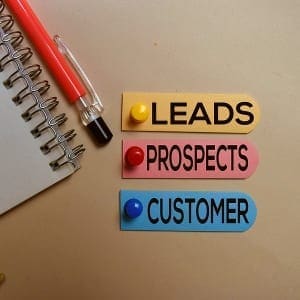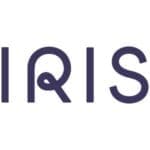 How much do you value your current customer base? If you’re in B2B, you might be surprised to learn a disparaging 69% of customers are seeking replacements for their existing solution providers.
How much do you value your current customer base? If you’re in B2B, you might be surprised to learn a disparaging 69% of customers are seeking replacements for their existing solution providers.
Don’t want to be part of that number? The fix is more straightforward than you’d think, as sales enablement training can boost customer engagement and increase your sales team’s productivity.
In this sales enablement guide, you’ll learn what sales enablement means, how it can increase customer engagement, sales productivity, and what you can do today to implement fantastic sales enablement strategies. We’ll throw in our awesome sales playbook template you can use in your training too.
What is sales enablement training?
Let’s take it back to the beginning and simplify the sales enablement definition.
All businesses need to make sure they have the proper sales enablement training to grow the company in the most effective way possible. By giving your sales reps the most up-to-date information and sales training, they will be able to connect to their customers and deliver outstanding customer service confidently.
The sales enablement training process isn’t something you should put together once and give to every new employee; it should be a comprehensive sales enablement program that keeps evolving throughout time. As you learn to get to know your customers, your sales enablement strategy will become over time too.
To see sales enablement success, you’ll need to put together the correct framework that your sales enablement team to go back and revert to as when required. You’ll need to analyze the content and put it in a concise course that we can help you with.
What’s the difference between sales training and sales enablement training?
Let’s be clear that sales training and sales enablement training aren’t the same things. While both types of training derive from the same principles, they have different approaches for how to train your sales team.
Sales Training is fundamentally about training people to sell in a particular manner. Sales training is also split into two sections: product training and process training.
During the product training process, you’ll teach your sales team how to become experts about the product they are selling. You want them to answer any questions and solve any problems or concerns the customer might have.
Once your team understands everything there is to know about the product they are selling; they’ll be ready to start the process training. This means they’ll need to understand who they are selling to. They’ll gain knowledge to combine the product training and process training to sell effortlessly to the customers.
Sales enablement training dives further into the sales training process. While the employee is a great salesperson, it helps them become even better at their job to create a positive buyer experience. Building a deeper training program that includes sales coaching, onboarding, gaining insights into analytics and metrics, and using sales enablement technology and tools will help your sales team become the sales rockstars they deserve to be.
Sales enablement pros and cons
While it seems like a sales enablement program is the natural progression to grow your team, there are pros and cons to consider.
Sales enablement training pros
Let’s start with the pros to help you see why sales enablement training is a fantastic addition for expanding your sales team and building them into rockstars.
- It will help the new hire onboarding process run much faster
- You’ll be able to turn the entire sales team into rockstars, so you won’t be relying on a couple of sales reps to build the revenue for the company
- Build team morale and be known as the training legend who took the company to the next level
- Be better aligned with the marketing team
- Improve the company’s reputation
Sales enablement training cons
Although there are many sales enablement benefits, it doesn’t come without cons too.
- You’ll need to allocate time to building and maintaining the sales enablement training course. It’s not something you put together once and leave it
- You’ll need to work with other stakeholders in the business to put the sales enablement strategy together – one of the many reasons why marketing and sales teams go hand in hand
- Trying to improve current sales managers’ processes might be more challenging than you think – especially if they aren’t willing to transform their knowledge and training.
Sales enablement training benefits for your team
According to a study by the Sales Management Association, sales enablement functions and resources have several benefits for sales teams, including:
- 29% increase in sales training effectiveness, meaning fewer resources needed to upskill your team.
- 15% improvement with low-performing sales team members, helping them to excel.
- 31% increase to a change in sales messaging, meaning your team is more adaptive.
The unfortunate side of these stats is that sales enablement training can’t be delivered through traditional methods. Applying the Ebbing Haus forgetting curve, most sales enablement training practices fail because they’re delivered incorrectly.
By leveraging a just-in-time training model, you can deliver contextually relevant training, dramatically increasing knowledge retention. This incredible online training method has proven to be an integral part of sales enablement training.
For your business, the benefits of having a well-trained sales team are both increased profitability as well as highly engaged customer acquisitions.
CRO of G2, Mike Weir drafted this article on the business benefits of sales enablement and mentioned that “64% of B2B customers won’t engage with a salesperson if the messaging isn’t personalized.”
An article by Gallup on how employee engagement can affect your business stated these benefits on highly engaged employees:
- 21% increase in profitability (money in the bank)
- 41% reduction in absenteeism (reduced call outs and inactive employees)
- 17% increase in productivity (efficient processes that drive effectiveness)
- 59% less annual turnover (which reduces your hiring costs. Don’t even get us started there)
- 10% boost to customer satisfaction ratings (happy customers=happy businesses)
- 20% rise in deals closed (see profitability)
Those are numbers that just don’t quit. And these are just some of the benefits of establishing a great sales enablement training model. But how can you get started?
Who owns sales enablement training?
As we mentioned above, you’ll need to work with multiple stakeholders to produce an epic sales enablement strategy. Understanding the roles between the marketing team, sales enablement team, and the sales team needs to be clear for every stakeholder. Although it can seem confusing to know which team is responsible for every part of the sales process, here’s a clear outline you can consider.
Marketing Team
The marketing and sales teams work very closely together and during the enablement process is no different. The marketing team’s role is to put together effective content that represents the impact on the revenue and engagement.
Sales Enablement Team
The sales enablement team will be driving the sales content and overall content management, customer engagement, and performance analytics.
Sales Team
The sales team are the cherry on the top who will need to combine the sales enablement processes and technology into the business every day.
How to implement sales enablement training
Sales enablement training is straightforward to deliver when you break it down into three areas of focus:
- Access to knowing when and where your team needs it
- Continuous learning that reaffirms best practices for your team
- Just in time training that allows your team to practice as they learn
Accessible training knowledge
To implement this aspect of sales enablement, think of where your sales collateral and content live. Keeping that information stored in a singular space that’s easy to access gives your team a powerful tool kit.
Continuous learning
Continuous learning is a proven method to increase your sales team retention. It’s also easily scalable as your team grows by enabling best practices from top performers to new hires.
By offering continuous learning regularly, you can set a scheduled routine for your team to follow throughout the year. Types of training can be anything from repeats of previous training sessions to conferences and certificate programs. Continuous training has even been proven to accelerate business growth.
Just in time training
By examining your sales teams’ day-to-day tasks, you can begin to map out a learning pathway for just-in-time training. This can be a simple reminder to complete a task a certain way or link off to a guide on how to tackle a new project.
The importance of converting your sales enablement to work with just-in-time training practices will become apparent to your team as they train on the job. JIT training prevents distractions is easily deliverable through any platform if you use the right tools.
Sales enablement training doesn’t have to be difficult or time-consuming. But missing out on the chance to build customer engagement through sales team growth is no longer an option. With these best practices and ideas to start out, you’ll be able to deliver powerful and effective sales enablement training in no time.
How to put together the sales enablement framework
Wondering how the sales enablement process is best practised? Although the idea of turning your team into rockstars sounds intriguing, understanding the guidelines to get you started would make it feel less overwhelming. You’re going to require a combination of flexibility, strategic thinking, and empathy to bring together a sales process like no other.
- Pick a good sales enablement manager who can lead the process
- Define the objectives, roles, and responsibilities for other stakeholders
- Dive deep into the buying process and understand the buyer experience better than before
- Align sales and marketing so everyone is on the same level to proceed with the training
- Focus on creating high-quality content that will engage and excite your sales reps
These key sales enablement terms will help you build a solid and effective sales enablement strategy, and the manager can implement and see results. You’ll specifically need to know your audience, priorities, your team, and your resources to get this new sales strategy in motion.
If there’s one tip, we can give you, it’s to make sure you document the results before and after implementing your sales enablement solution.
Want to take a look at our learning solutions?
Contact our team to discuss how we could help with learning in your organization.



















